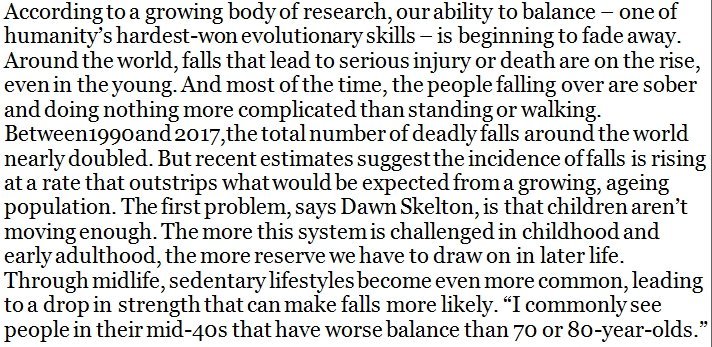Sublime
An inspiration engine for ideas

Whether you move or not, your choice stimulates the cytoskeletons of all your cells in a way that signals “this behavior is what I do, so please adapt.” The current epidemic of osteoporosis—specifically loss in the wrists, ribs, spine, and head of the thigh bone—speaks volumes about how we move.
Katy Bowman • Move Your DNA: Restore Your Health Through Natural Movement


‘the accumulation of strength over a period of time allows all of our body’s structures to adapt and make us less prone to injury and more able to deal with the stresses and strains that we place upon it.
Ross Edgley • The Art of Resilience: Strategies for an Unbreakable Mind and Body


For two hundred thousand years, our body’s appetite and weight-control systems functioned well. They even worked during the US boom years from the 1940s through the 1970s, when food was just as abundant as it is today. And just like today, almost everyone had an automobile—we weren’t walking everywhere—and jogging and gym-going were relatively rare
... See moreIvor Cummins • Eat Rich, Live Long: Mastering the Low-Carb & Keto Spectrum for Weight Loss and Longevity
Unless we are asleep, we human beings are designed to move. Our normal physiology depends on this important fact. We evolved a central nervous system to sense changes around us and to move us through our environment. For nearly 200,000 years, Homo sapiens spent the majority of their time on the move. If they wanted something to eat, they had to hun
... See more